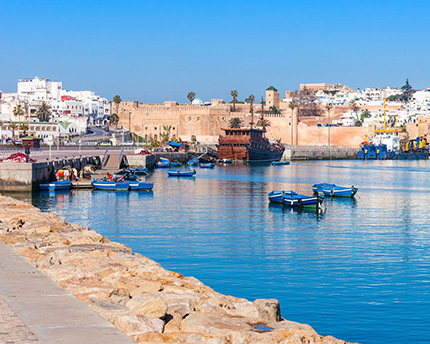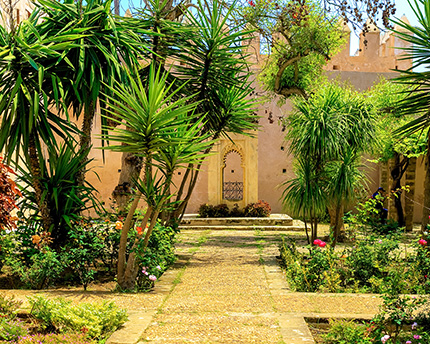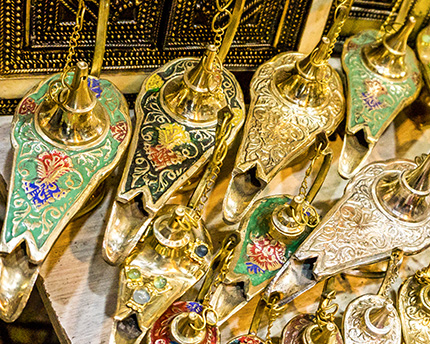The Chellah necropolis in Rabat is located on the site once occupied by the Phoenicians, the first people to inhabit this hill on the Bou Regreg river, and later, around AD 40, by the Romans, who renamed the city Sala Colonia. Abandoned in 1154, the city was deserted until the 14th century when the Benimerin sultan Abu al-Hassan decided to build a necropolis protected by a colossal wall.
It is now virtually in ruins, but visitors can go to a lookout point to check out the remains of the Roman city and what little is left of the Islamic ensemble: a slender stone and tile minaret. There are also the ruins of the mausoleum of Abu al-Hassan and his wife, with sculpted stones and some remains of the typical ‘zellij’ decoration (mosaics made from pieces of tile), and the tombs of some saints. You should also explore the Bassin aux Anguilles, a pool where eels live, which pregnant women feed with boiled eggs because, according to legend, this favours fertility and an easy birth.
History of the Chellah necropolis
The historic necropolis of Chellah is named after a local tribe that settled on the southern flank of the ramparts built by Abu al-Hassan. It was an area of great importance at the time, to the extent that there was a small university or madrasa there, and you can still see the remains of columns, student cells, a mihrab for prayer and an ornamental pool. However, the most famous site in the Chellah necropolis is the tomb of sultan Abu al-Hassan and his wife, Oum el-Izz. Their successors, Abu Ya’qub and Abu Thabit, were also buried there. A path lined with flowers and palm trees, very pleasant for walking, begins at this unique place.
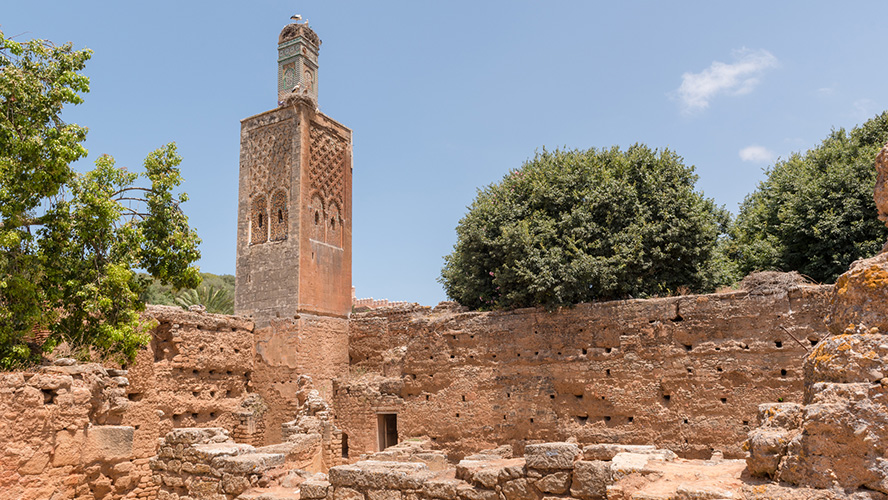
The ochre-coloured walls surrounding the necropolis were built by Abu al-Hassan and are said to be a reconstruction of the existing Roman walls. As early as 1500, Leo Africanus wrote in his chronicles that there were at least 30 Benimerin tombs there.
Every year in September, the site hosts the Jazz Au Chellah festival, which brings together famous musicians from Europe and Morocco.
Access to the Chellah necropolis
Located in the south-east of Rabat, about 2 km from the city centre, the main entrance to the Chellah necropolis is an Almohad gate with a horseshoe arch on top of which is a band of calligraphy bearing the name of sultan Abu al-Hassan and the date 1339. The gate is flanked by two imposing towers. Once through the historic gate, a stepped pathway leads up to an esplanade overlooking the Bou Regreg river valley, the Chellah necropolis and the remains of the Roman city of Sala Colonia.
Things to see at the Chellah necropolis
The Chellah necropolis shows us how the Phoenicians, Carthaginians, Romans and Arabs lived. Surrounded by walls, it includes the ruins of the mosque erected by Abu Yusuf and the buildings that surrounded it. Behind the mihrab is the shrine of Abu Ya’qub Yusuf. However, the most remarkable feature of this historic area is the mausoleum of Abu al-Hassan, also known as the ‘Black Sultan’, and that of his wife, a Christian who converted to Islam and was the driving force behind the construction of the Bou Inania Madrasa in the city of Fez. It is also interesting to explore the remains of the triumphal arch, forum and baths of the Roman city. From the Arab period, the remains of the old hammam and several tombs and shrines lend a magical character to this site, which is now inhabited by numerous storks.
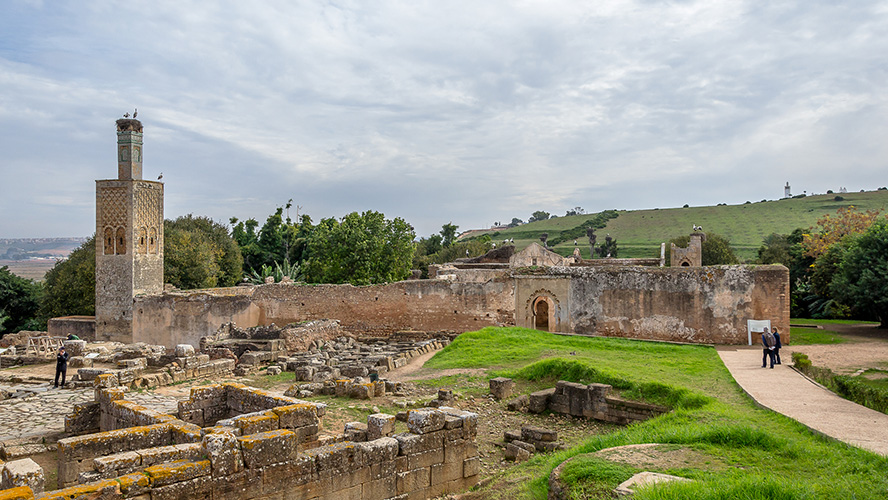
Information for visitors
The Chellah necropolis is currently closed. In principle, this is only temporary. Therefore, it is a good idea to get information before visiting this historic site, which is located on the outskirts of Rabat, in the south-east of the city. Its usual visiting hours are from Monday to Sunday from 9 a.m. to 5 p.m.
To reach the Chellah necropolis, go to Mussa Ibn Nusair Avenue, which is where the entrance to the site is located. The best option is to take a taxi, which will cost 20-30 dirhams, but you can also get there by tram on line 2.





























































